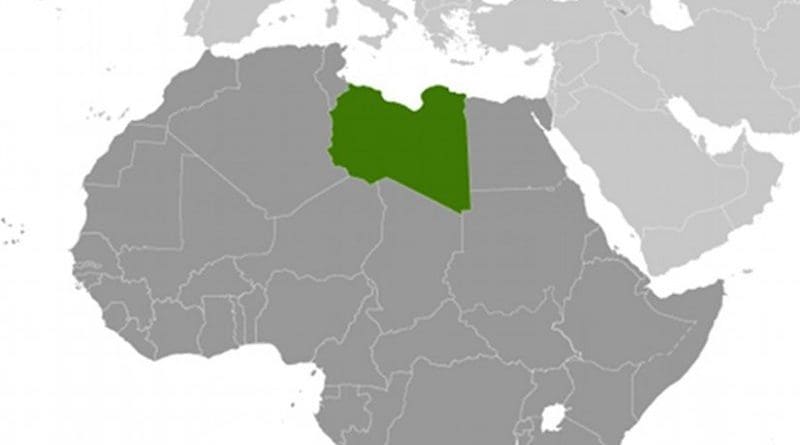A Joint Arab Force Could Better Enforce A Libya No-Fly-Zone
By INEGMA
By Riad Kahwaji
The United Nations Security Council and Western powers are debating the feasibility and benefits of enforcing a no-fly zone over Libya to halt air raids by the regime of Moammar Gadhafi on rebel forces and unarmed demonstrators who launched on February 17 a revolution to overthrow the four-decade-long Ghadafi dictatorship. Rebel forces have taken control of all of the eastern part of the country and several parts of the western side and most of the central area. Several Libyan army units joined the rebels in a campaign to clear the oil-rich country’s towns and cities of Gadhafi elite troops led by the dictator’s sons and henchmen. The rebels’ onslaught on Gadhafi was halted and sometimes pushed back by the Libyan Air Force, or what is left of it. Many countries around the world have called for establishing a no-fly zone (NFZ) to protect the Libyan rebels and civilians. Also many Arab countries, especially members of the Gulf Cooperation Council (GCC) have called for an NFZ over Libya, and so did the National Transition Council formed by the Libyan rebels to run the country’s affairs until a new government replaces Gadhafi’s. However, the United States and European countries have sent mixed signals on the NFZ, which drew criticism from many circles in Middle East and West.
Some Arab defense experts believe it is time for the Arab States to stand up and take responsibilities in their own hands and come to the aid of the Libyans. Retired Major General Khaled Al-Bu Ainnain, former commander of the United Arab Emirates Air Force and Air Defense, believes that some GCC states and Egypt can mount a joint operation and successfully enforce an NFZ over Libya. “The UAE Air Force can deploy couple of squadrons – one F-16 Block 60 and another Mirage 2000-9 – the Saudi Air Force can deploy a couple of F-15S squadrons and Egypt a couple of F-16 squadrons out of Mersi Matrouh Air Base in western Egypt,” Al-Bu Ainnain said. “This would provide 120 fighters and attack aircrafts that would be backed with airborne early warning planes like Egyptian E-2C Hawkeye or Saudi AWACS, some unmanned aerial vehicles (UAV) for reconnaissance, and air-refueling tankers from Saudi Arabia and couple of Egyptian or UAE helicopter squadrons comp osed of Apache Longbow gunships, Blackhawks and Chinook helicopters, for search and rescue missions.” Crews and troops needed for the operation could be quickly airlifted to western Egypt, and even Algeria, within hours using a large fleet of UAE and Egyptian C-130 and Qatari C-17 transporters.
Observers believe the area of operations for any force executing an NFZ over Libya now would be confined to the area between the capital Tripoli and the City of Cert and down south to Sebha in the center. The rest of the country is under rebel control. The Libyan Air Force is comprised of aging Cold War-era Soviet supplied fighters like Su-22, MiG-21 and MiG-23 and one remaining operational Mirage F-1 and some 30 MiMi-24 Helicopter gunships. According to reports out of Libya, only few Su-22 and MiG-23 aircrafts were seen involved in the air raids in addition to MiMi-24 gunships. As for Air Defense, Gadhafi’s forces are believed to be in possession of a few batteries of Soviet-era SAM-2, SAM-3 and SAM-6 surface to air missiles. “All of the Libyan Air Defense SAM’s and radars can be taken out swiftly by the arsenal of smart weapons and cruise missiles in possession today by GCC and Egyptian Air Forces,” Al-Bu Ainnain said. “Runways can be destr oyed with bunker-busters to ground all the jets, and the gunships can be easily destroyed on the ground.” He pointed out that GCC and Egyptian Air Forces have considerably enhanced their joint-operations capabilities as a result of almost annual exercises they have done together along with the U.S. and some EU countries. “Issues related to command and control and interoperability would be resolved quickly which would ensure a smooth running of NFZ operations.”
Many analysts believe Libyan rebels and the Arab street would be more welcoming of a joint Arab force enforcing NFZ than a Western one. Even Arab street reaction to an operation led by Arab countries would reflect favorably on the concerned governments, and reduce mounting frustration amongst Arabs of seeing their governments weak and indecisive in resolving Arab problems. GCC officials have indicated in their recent statements that a request by the Arab League would be enough to give legitimacy to a NFZ in Libya. Arab troops would be able to operate more easily and effective on the ground in Libya than Westerners due to issues related to language, culture and geography. Most analysts agree an Arab joint force would have more success than a Western one in Libya, provided the joint force gets the needed political commitment regionally and internationally.
Riad Kahwaji is CEO, INEGMA

